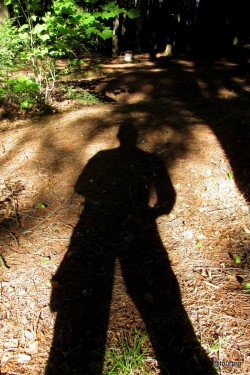ADIRONDACK COUNCIL CALLS 2012 YEAR OF EXTREMES FOR PARK AS TROPICAL STORM, INVASIVE SPECIES HIT HARD WHILE MAJOR LAND PURCHASE IS BEST ADDITION TO ‘FORVER WILD’ PRESERVE IN CENTURY
USEPA Advances Clean Air Regulations, Court Strikes Them Down; Year of Highs and Lows Detailed in ‘State of the Park 2012’
 The Adirondack Park was subjected to a barrage of extreme outside influences over the past 12 months, some of which devastated small communities and public natural resources, while others brought unprecedented good news to park residents and visitors, the Adirondack Council noted in its 2012 State of the Park report.
The Adirondack Park was subjected to a barrage of extreme outside influences over the past 12 months, some of which devastated small communities and public natural resources, while others brought unprecedented good news to park residents and visitors, the Adirondack Council noted in its 2012 State of the Park report.
“Last fall, Gov. Andrew Cuomo acted quickly to marshall state agencies to the aid of communities that were hit hard by Tropical Storm Irene,” said Adirondack Council Acting Executive Director Diane W. Fish. “In the process, however, damage was done to rivers and trout streams that will take great effort and substantial investments to repair.
“Then, this August, the Governor announced he would make the largest purchase of new public lands for the Adirondack Forest Preserve in history,” Fish said. “These lands are unique, biologically rich and vitally important to the park’s water quality and wildlife. They will be a lasting environmental legacy for the Governor and a big boost to local tourism.
“Still, budget cuts and expired terms of office are plaguing his environmental agencies, while his regional economic councils lack environmental representation,” she said. “On the whole, the Governor won more praise than criticism this year.”
State of the Park is a comprehensive, non-partisan, review of the actions of local, state and federal government officials that helped or harmed the Adirondack Park over the past year. It is issued by the Adirondack Council, a privately funded, not-for-profit organization dedicated to ensuring the ecological integrity and wild character of the Adirondack Park. This illustrated, 18-page review is the Council’s 27th annual State of the Park report. A copy of the report is available online at AdirondackCouncil.org.
The Adirondack Park is the largest park in the contiguous United States (9,300 square miles). Unlike most American parks, it consists of both public and private land and contains 130 small villages and hamlets inside of 92 towns and 12 counties, with roughly 135,000 permanent residents. It also contains 2.7 million acres of “forever wild” Forest Preserve and most of the wilderness and old growth forest remaining in the Northeast.
The State Legislature earned praise for four progressive bills it passed by working across party lines. Among them was the state’s first law designed to slow the spread of invasive species, sponsored by Sen. Betty Little, R-Queensbury, and Assembly Environmental Conservation Committee Chairman Bob Sweeney, D-Lindenhurst.
“This year, state officials confirmed that invasive species such as the Asian clam and spiny water flea have been found in Lake George and other popular water bodies, while feral pigs have been spotted digging up portions of Clinton County,” Fish said. “There are still large areas of the park that are not yet infested. We want to keep them that way.”
Also earning praise were: Sen. Environmental Conservation Committee Chairman Mark Grisanti, R-Buffalo; Sen. Joseph Griffo, R-Rome; Sen. Carl Marcellino, R-Syosset; Assemblywoman Aileen Gunther, D-Forestburgh; Assemblyman Fred Thiele, I-Sag Harbor; and, Assemblyman David Gantt, D-Rochester; as well as the Assembly Speaker Sheldon Silver, D-Manhattan, who declined to pass four Senate bills and a proposed Constitutional Amendment that could have harmed the park’s environment. As a House, the Assembly won only praise in the report.
Singled out for individual criticism were: Senator Little for three anti-wilderness bills aimed at increasing motorized traffic on the Forest Preserve; and, Sen. Pattie Ritchie, ROswegatchie and Assemblyman Bill Magee, D-Nelson, for a bill that would allow 1,500-pound all-terrain-vehicles on public trails.
On the federal level, praise went to Sen. Charles Schumer, D-NY, and Rep. Bill Owens, D-Plattsburgh, for restoring funding for flood-warning gauges on Adirondack streams. Sen. Kirsten Gillibrand and Schumer also helped to defeat a bill that would have prevented federal officials from implementing a new acid rain standard for power plants. The USEPA won praise for advancing new air pollution standards and the US Fish and Wildlife Service won favorable mentions for its work restoring trout streams and for nominating a rare native songbird (Bicknell’s thrush) for protection under the Endangered Species Act. Rep. Chris Gibson, R-Kinderhook, joined Schumer, Gillibrand and Owens in winning praise for his support of the federal Land and Water Conservation Fund.
The Adirondack Council – whose membership has expanded from just the Northeast to all 50 United States since its first State of the Park report was issued in 1986 – praised five out-of-state U.S. Senators for breaking with fellow Republicans in an otherwise party-line vote. Together, they defeated a bill that would have killed the new federal mercury regulations for power plants.
The Warren County Board of Supervisors won the highest praise for local governments in the report, for passing a local invasive species law that is much tougher than the state law passed this summer. Fines of $5,000 and up to 15 days in jail await anyone who introduces an aquatic invasive species into Lake George or the 20 other major water bodies in the county.
Local governments also made progress controlling all-terrain vehicle traffic on public lands; undertook major energy conservation and renewable energy development projects; and, rejected development plans deemed inappropriate for Peck’s Lake, near Gloversville.
The Department of Environmental Conservation made progress on invasive species this year, conducting a series of tourist-season roadblocks and vehicle inspections to stop thosewho might be carrying firewood into the park from other parts of the state that might be infested with invasive plants and insects such as the Emerald Ash Borer or Asian Longhorn Beetle.
The DEC also adopted new air quality standards that will better protect the park from acid rain and smog. It also destroyed its surplus of carbon allowances leftover from previous Regional Greenhouse Gas Initiative auctions, eliminating thousands of tons of carbon that otherwise would have been emitted by power plants in the 10-state RGGI region (Maine to Maryland).
The Adirondack Park Agency did improve the flawed resort project proposed for the ski hill outside of the Village of Tupper Lake, but its rules and regulations do not incorporate the latest science on water quality, wildlife and forest health. They have not been updated since 1971. Some of the rules can be changed by the agency. Others would require legislation.
Attorney General Eric Schneiderman earned only praise in the report, focused on his work in defending new federal mercury standards, in defending the RGGI program and in seeking to compel federal officials to adopt tougher standards for emissions of soot from power plants.
Overall, it was an uneven year for court decisions, with six state and federal decisions favoring Adirondack conservation and four decisions that did harm to environmental protections.
Founded in 1975, the Adirondack Council is an independent advocate for the park. The organization doesn’t accept government grants or taxpayer-supported contributions of any kind. The Council does not endorse candidates for public office.


 The Adirondacks and the surrounding region are at High Fire Danger Levels, warns the
The Adirondacks and the surrounding region are at High Fire Danger Levels, warns the 


